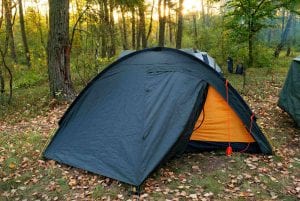Camera drones are fast becoming an essential part of our travels. To be honest, I can’t imagine going anywhere without my small Mavic Mini securely tucked inside my backpack. But, having traveled enough, I know that carrying a delicate drone around with 2 heavy spare batteries, a bulky controller, and all the cumbersome charging cables isn’t an easy task.
In this article, I am going to cover 5 tips on how to travel with a drone without putting too much weight on your shoulder and without getting into last-minute trouble at the airport.
#1 Chose a travel-friendly drone
Not all drones are travel friendly. If you are a frequent traveler and can’t go anywhere without taking your flying camera along, get a drone that has the following features.
- Preferably weigh less than 250g so that you don’t have to register it with the authorities at destination. Most countries have a weight limit on drones. For example, in the US, you cannot fly a drone that weighs more than 250g without first registering the drone with the FAA. If your drone weighs less than 250g, you can just take it to the air without worrying about registration.
- It should be compact. If you are a light traveler like me, you know you don’t always have the space for everything. In such a situation, a compact drone comes in handy. Most high-end drones like the DJI Mavic series come with folding rotor arms, making the drone very compact and saves you precious space for an extra pair of socks.
- The batteries should be rated at less than 100 Watt-hour. This makes them easier to carry as a hand carry on major airlines as most have an upper limit defined for watt-hours.
- The camera gimbal should have a protective cover. I have damaged my Mavic Air 2 gimble too many times to learn that it is the drone’s most sensitive component. If your drone has a mechanical gimbal, make sure it is protected from the slightest of shocks. [Pro tip: Put a small piece of scotch tape over the gimbal cover to make sure it doesn’t come off in your bag)
Author Recommendation: DJI Mavic Mini 2
#2 Buy additional batteries
Running out of power at a very scenic place shouldn’t be the highlight of your travel. If you are traveling somewhere with little or no access to a power outlet to charge your drone battery, it is better to buy a few additional batteries and charge them all fully before leaving.
As per the FAA rule, you can carry as many batteries in your hand carry as long as they are rated less than 100 watt-hours. Above 100 watt-hours, only two batteries are allowed.
LiPo batteries used in most drones are prone to fire in unsuitable conditions and different airlines have safety guidelines. It is better to put them in Lipo safe bags available on Amazon or Walmart.
#3 Get a universal travel adapter
If you are traveling internationally, a universal travel adapter is quite handy; else, you might find yourself in a situation where you can’t charge your drone (or any electronic for that matter) even if wall power is available, but the socket is not compatible with your charger.
You can easily find a suitable adapter on Amazon for less than $15. I personally like this one
#4 Read and understand local drone laws
This one should be on top of the list because that’s how important this point is. Every country has its own rules and laws to regulate recreational drones. Even if you are traveling within the US, the laws vary from state to state. It’s essential to understand the local laws to avoid getting into trouble with the local authorities.
For example, if you are a foreigner traveling to the US, you should know that you cannot fly your drone in any federally designated National Parks & Wilderness Areas. Similarly, most countries limit the maximum altitude to around 400 ft from above the ground level.
If your drone needs registration before flying, you can do that online in most countries. Register your drone before you leave so that you don’t waste your precious travel time doing unnecessary paperwork during your trip.
#5 Get a drone-friendly backpack
Most drones come with their own bags or cases which are pretty good to use at home but are often too big and unnecessarily heavy for long travel.
A drone friendly backpack is the best thing you can buy if you are a frequent traveler. They have safe pockets for your drone, batteries, and controller. The pockets are normally padded to absorbed shocks and protect your machine from damage.
Most travelers also carry a DSLR camera with a few extra lenses so the backpack can accommodate them as well and you carry all your heavy electronics in a single secure silhouette.
I have found the following three backpacks to be ideal for traveling with a drone and camera modules [note: replace the links with your affiliate link before publishing]
1. This reasonably priced, generic brand, camera backpack
2. This rather fancier number from Torvol
3. This highly specialized drone backpack from Lowpro
Summary – how to travel with a drone
To summarize our discussion so far, note down the following point before you travel with a drone to make the most of your drone while minimizing your hassle.
- Buy a travel-friendly drone with minimum possible weight.
- Make sure it is compact and foldable to save space.
- The batteries should be less than 100 watt-hours each to comply with airline carry-on regulations.
- Get additional batteries to fly your drone for a longer time while away from a power source.
- Get a travel adapter to work around incompatible power outlets.
- Make yourself familiar with local drone regulations before flying.
- Get a drone-friendly travel backpack.
Following the above tips, you will make sure of a smooth trip with your flying camera and get the most out of your time on the road.





